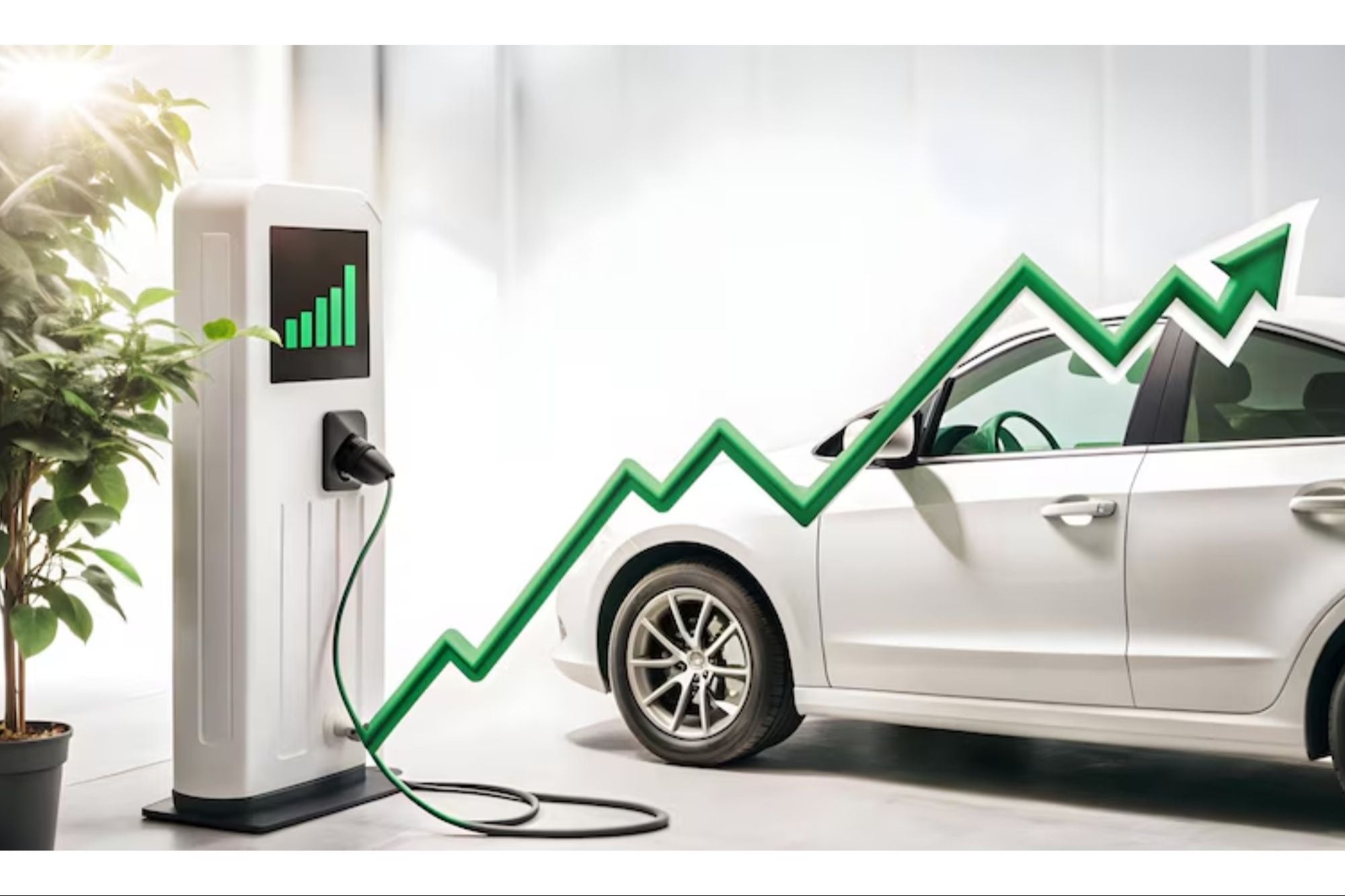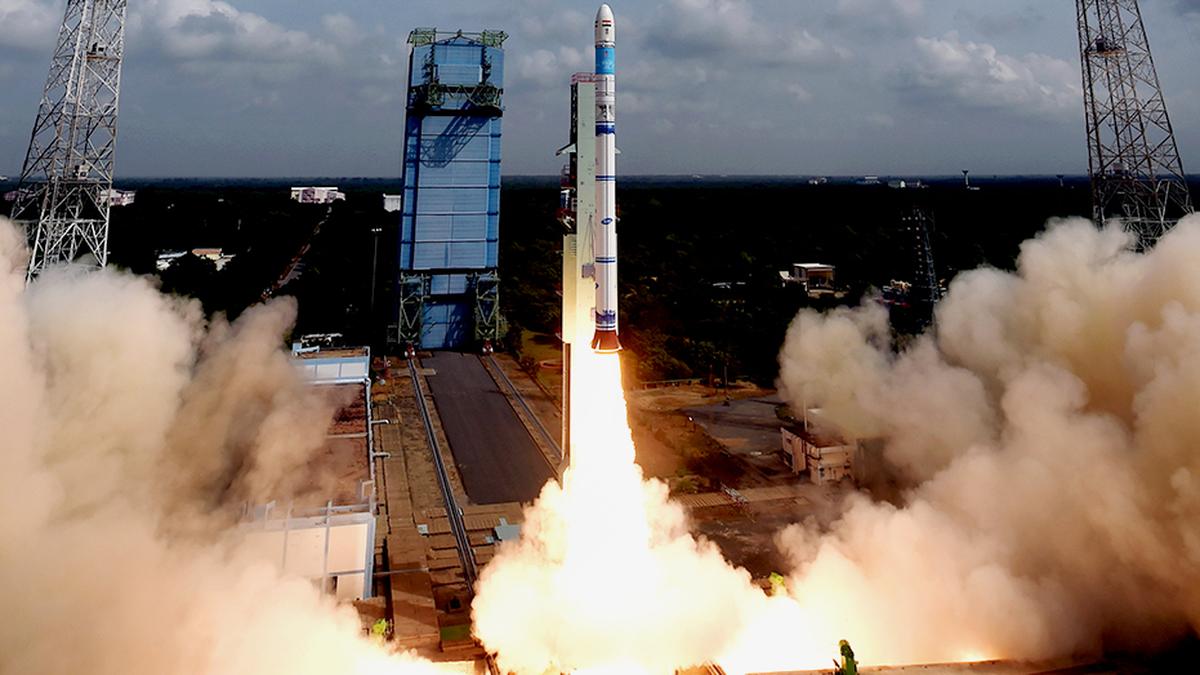- Courses
- GS Full Course 1 Year
- GS Full Course 2 Year
- GS Full Course 3 Year
- GS Full Course Till Selection
- Answer Alpha: Mains 2025 Mentorship
- MEP (Mains Enrichment Programme) Data, Facts
- Essay Target – 150+ Marks
- Online Program
- GS Recorded Course
- Polity
- Geography
- Economy
- Ancient, Medieval and Art & Culture AMAC
- Modern India, Post Independence & World History
- Environment
- Governance
- Science & Technology
- International Relations and Internal Security
- Disaster Management
- Ethics
- NCERT Current Affairs
- Indian Society and Social Issue
- NCERT- Science and Technology
- NCERT - Geography
- NCERT - Ancient History
- NCERT- World History
- NCERT Modern History
- CSAT
- 5 LAYERED ARJUNA Mentorship
- Public Administration Optional
- ABOUT US
- OUR TOPPERS
- TEST SERIES
- FREE STUDY MATERIAL
- VIDEOS
- CONTACT US
India’s EV Surge: Manufacturing for the Future
India’s EV Surge: Manufacturing for the Future

Why in the News?
- India’s electric four-wheeler manufacturing capacity is expected to rise sharply from 0.2 million units to 2.5 million units by 2030.
- This would make India the fourth-largest electric car producer in the world, after China, Europe, and the United States.
- India’s future electric car production may exceed domestic demand, creating opportunities for exports, but only if Indian manufacturers can reduce production costs and compete globally.
- Currently, almost all EVs made in India are sold within the country, not exported.
What are the Key Highlights?
|
No. |
Event / Development |
Timeline / Year |
|
1 |
India launched consumer subsidies linked with localisation requirements for EVs. (FAME Scheme) |
Past decade (policy era beginning ~2015 onwards) |
|
2 |
Import tariffs of 70–100% on fully built EVs imposed to protect domestic manufacturers. |
Ongoing since ~2018 |
|
3 |
Expansion of EV charging infrastructure initiated. (FAME II Scheme) |
Post-2019 |
|
4 |
Significant battery cell and module projects were announced and construction began. (PLI Scheme for Advanced Chemistry Cell (ACC)) |
2021–2024 |
|
5 |
Vietnam’s EV penetration jumped from 3% to 17%, driven by VinFast. |
2022–2024 |
|
6 |
India’s EV penetration reached only 2%. |
2024 |
|
7 |
Tata, MG, Mahindra together held ~90% of India’s EV market. |
2024–25 |
|
8 |
India’s EV manufacturing capacity is recorded at 0.2 million. |
2024 |
|
9 |
India is projected to reach 2.5 million EV manufacturing capacity. |
By 2030 (future target) |
|
10 |
India to become the 4th-largest EV producer globally. |
By 2030 (future target) |
- India’s Growing Role in the Global Electric Vehicle Market:
- India’s electric car production will be more than what the country needs by 2030.
- The expected demand is between 4.3 lakh to 14 lakh (1.4 million) vehicles, but production capacity will be 25 lakh.
- India can export extra electric cars to other countries in the future.
- This export plan matches the government’s goal of ‘Make in India for the world’.
- Indian companies must reduce their costs to compete with cheaper Chinese electric cars.
- Tata Motors, MG Motor, and Mahindra together controlled about 90% of the Indian EV market in 2024-25.
- India will become the fourth-largest electric car maker in the world after China (290 lakh), Europe (90 lakh), and the US (60 lakh) by 2030.
- India will be ahead of Japan and South Korea in planned EV production capacity.
- India’s EV Strategy and Global Comparison:
- Japan and South Korea currently have higher EV production capacities, Japan has 11 lakh units, and South Korea has 5 lakh units as of now.
- Both countries have limited expansion plans, with little new capacity under construction or announced.
- Japan’s EV capacity is expected to reach 14 lakh, and South Korea’s to 19 lakh units by 2030.
- India has followed a unique path to build its EV industry using a mix of industrial policies, financial incentives, and protective trade measures.
- The government offers subsidies to EV buyers, but these are linked to local manufacturing requirements.
- India gives special support to companies making batteries and EV parts within the country.
- The country is also expanding charging infrastructure to support the growing number of EVs.
- High import taxes (70–100%) on fully built EVs have been introduced to protect domestic manufacturers.
- This protectionist approach has helped local EV production grow, but it also reduces choices for consumers and keeps prices high.
- EV Sales and Battery Manufacturing:
- Electric Vehicle Sales Growth
- EV penetration in India was only 2% in 2024, which is quite low.
- In comparison, Vietnam’s EV penetration rose sharply from 3% in 2022 to 17% in 2024, mainly due to the success of local company VinFast.
- India’s Position in Battery Manufacturing:
- India has emerged as a strong player in battery production, especially in cells and modules.
- India is expected to become the largest battery module producer after China, the US, and Europe.
- India’s cell production capacity will be lower than China, the US, Europe, and Canada, by 2030, but higher than South Korea, Malaysia, Japan, and others.
- Electric Vehicle Sales Growth
|
What are the Significances of Rise in EV Manufacturing?
- Global Leadership in EV Manufacturing: India is set to become the fourth-largest electric car producer in the world by 2030, showing its rising importance in the global clean energy market.
- Export Opportunities: With production expected to exceed domestic demand, India has the potential to become a major exporter of electric vehicles, supporting the government's vision of ‘Make in India for the world’.
- Strengthening Domestic Industry: India’s mix of industrial policy, subsidies, and trade protection has helped build a strong local EV manufacturing base, reducing dependence on imports.
- Boost to Battery Sector: India is becoming a key player in battery module and cell manufacturing, which is crucial for energy security, job creation, and reducing battery import dependence.
- Encouragement for Local Innovation: Government policies that promote localization and battery production encourage technological innovation and the growth of a complete EV ecosystem within India.
- Improved Infrastructure and Investment: Expansion of charging stations and incentives for battery manufacturing attract both public and private investment, boosting infrastructure development.
- Environmental Benefits: A strong EV sector will help reduce air pollution and cut greenhouse gas emissions, contributing to India’s climate goals and commitments under international agreements like the Paris Agreement.
- Strategic Positioning in Asia: By surpassing Japan and South Korea in planned EV capacity, India is positioning itself as a regional EV hub, which strengthens its economic and strategic influence.
What are the Challenges and Way Forward?
|
No. |
Challenges |
Way Forward |
|
1. |
EV production may outpace domestic demand, leading to surplus. |
Develop strong export strategies and trade partnerships to sell surplus EVs in international markets. |
|
2. |
High production costs compared to China. |
Promote economies of scale, automation, and reduce input costs through innovation and localisation. |
|
3. |
High import duties limit consumer choices and increase EV prices |
Gradually rationalize tariffs while supporting local industry to balance affordability and protection. |
|
4. |
Low EV penetration (only 2% in 2024) |
Increase public awareness, improve incentives, and expand EV options to boost adoption. |
|
5. |
Limited battery manufacturing infrastructure still under construction |
Ensure timely implementation and execution of battery projects. |
|
6. |
Risk of delays in ongoing battery projects |
Improve project monitoring and provide support to investors and manufacturers. |
|
7. |
Underdeveloped EV charging infrastructure |
Rapidly expand public and private EV charging stations across cities and highways. |
|
8. |
Global competition from China, EU, US, and Vietnam |
Focus on niche markets, affordable EVs, and high-quality manufacturing to gain a competitive edge. |
|
9. |
Dependence on imported battery materials |
Invest in domestic mining, recycling, and research for battery raw materials like lithium and cobalt. |
Conclusion
India’s rise in the electric vehicle sector signals a transformative shift in its industrial and environmental landscape. With substantial manufacturing capacity and growing momentum in battery production, the country is positioning itself as a serious player in the global clean mobility race. However, success will depend on how well India navigates cost challenges, builds export readiness, and ensures timely infrastructure development. A forward-looking approach rooted in innovation, strategic investment, and global competitiveness will be essential to convert potential into long-term leadership.
Important Keywords and Definitions of the Article:
|
No. |
Keyword |
Definition (in simple words) |
|
1 |
EV (Electric Vehicle) |
A vehicle powered by an electric motor instead of a petrol or diesel engine. |
|
2 |
EV Penetration |
The percentage of electric vehicles sold compared to total vehicle sales. |
|
3 |
Battery Module |
A unit made of multiple battery cells that stores and supplies power to an EV. |
|
4 |
GWh (Gigawatt Hour) |
A unit of energy; used to measure battery production capacity (1 GWh = 10 lakh kWh). |
|
5 |
Production Capacity |
The maximum number of EVs or batteries that a country or company can produce in a year. |
|
6 |
Localization |
Making vehicle parts or batteries inside the country instead of importing them. |
|
7 |
Make in India for the World |
Government’s plan to manufacture in India not just for domestic use but also for export. |
|
8 |
Import Tariff |
Tax charged on imported goods; high tariffs protect local manufacturers from foreign competition. |
|
9 |
Industrial Policy |
Government strategy to support the growth of industries like EVs through incentives and rules. |
|
10 |
Market Incentives |
Benefits like subsidies or tax breaks given to buyers and sellers to promote EV adoption. |
|
121 |
Protectionist Trade Policy |
A policy that protects local industry by imposing high taxes or restrictions on imports. |
|
13 |
EV Ecosystem |
The complete network needed for EVs: vehicles, batteries, charging stations, suppliers, etc. |
|
14 |
Surplus Capacity |
When production is more than domestic demand, allowing for export potential. |
|
15 |
EV Export Strategy |
A plan to sell excess electric vehicles to international markets. |
|
Ensure IAS Mains Question:
Q. India’s ambitious growth in electric vehicle manufacturing offers significant opportunities but also poses multiple challenges. Discuss the role of industrial policy, trade protection, and innovation in making India a global EV hub. Also, suggest measures to enhance India’s export competitiveness in this sector. (250 words) |
|
Ensure IAS Prelim Questions:
Q. Consider the following statements regarding India’s electric vehicle (EV) sector:
Which of the statements given above is/are correct? A. 1 and 2 only Answer: B Explanation:
|



